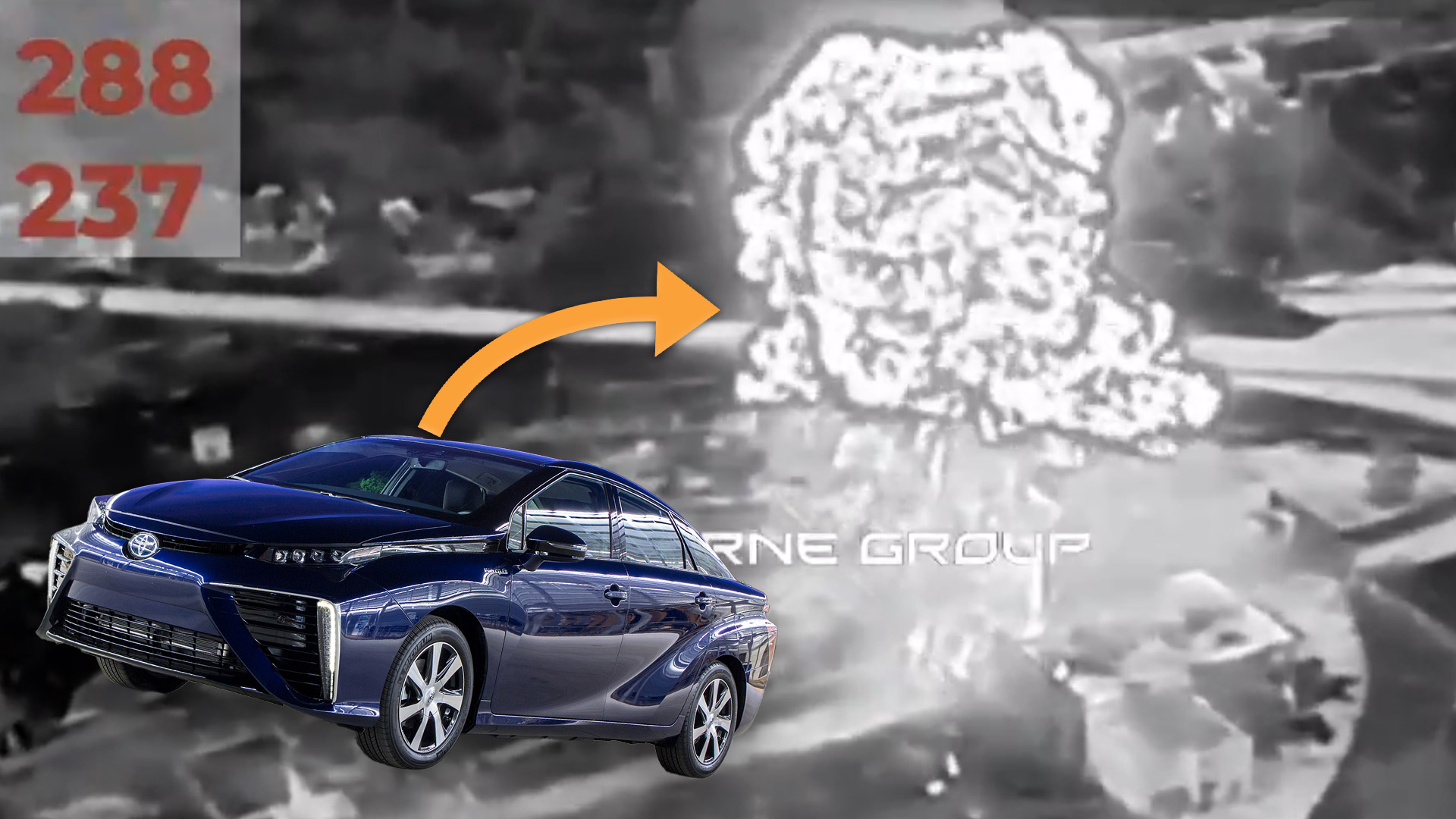

A battery fire or hydrogen tank explosion is the worst nightmare of any owner of an electrified vehicle. But this grim potential was recently put to good use by Ukrainian fighters against Russian invaders, against whom they deployed a remote-operated bomb that was partially built using a Toyota Mirai hydrogen car’s fuel tank. In a sense, they might’ve just deployed the smallest hydrogen bomb ever built.
The bomb was constructed as part of a July counteroffensive in Vovchansk in the northern part of Ukraine according to Euromaidan Press, an outlet run by a pro-western Ukrainian movement. Russian forces had reportedly failed an offensive to the south of Vovchansk, and retreated to an aggregate plant that overlooked the town from the north. The position was nearly encircled by Ukrainians, though they lacked the firepower to assault the plant directly. Reduced foreign military aid meant that airstrikes were no longer possible, while conventional drones couldn’t deliver a large enough payload. Instead, the Ukrainians turned to an unusual source of materials to make IEDs: Electrified vehicles.

Ukrainian fighters have reportedly been salvaging parts from multiple makes of vehicles to produce homebrew suicide drones and other remote-operated vehicles. Batteries and motors for example have been pulled from abandoned Teslas. Electronic countermeasures have further complicated the use of airborne drones, so the Ukrainians decided on land-borne delivery for a more than 440-pound explosive built from a Toyota Mirai’s hydrogen fuel cell.
The hydrogen-powered Mirai drives by feeding H2 from a high-pressure tank into a fuel cell, where it generates electricity to power the car’s electric motors. The tank weighs about 115 lbs, and stores just over 12 lbs of hydrogen at 10,000 psi. That’s equivalent to the pressure of being 22,500 feet underwater. It has to be that sturdy because the hydrogen inside has an enormous potential energy of 33.6 Wh/kg, or about 677.6 megajoules for the whole tank. That’s equal to about 357 lbs of TNT. Combine that with an unreported amount of plastic explosives to pierce the tank (seemingly hundreds of pounds), and the Ukrainians made themselves one hell of a budget bunker buster.
The bomb was deployed on a remotely operated vehicle that navigated a partially destroyed bridge hidden from the Russians by a stand of trees. It successfully reached the eastern building in the complex before being detonated, sending up a mushroom cloud followed by a large fire. (The bomb is speculated to have hit Russian ammo storage.) The Russians’ fortifications were compromised due to the blast, and they moved to reinforce the weakened position.
However, doing so reportedly left other holes in their lines that allowed Ukrainian resistance fighters to take ground, and threaten supply lines that support Russian forces in the aggregate plant. Combat in Vovchansk is far from over, but it’s funny for a Toyota Mirai of all things to have played a documented role in winning Ukrainian territory back from Russian invaders.
Got a tip or question for the author? You can reach them here: james@thedrive.com
